In Between the Sprinkles
The birds came out when it briefly stopped raining
On Sunday we had a tiny bit of rain. This year, especially, any rain at all is appreciated. When the sprinkles finally stopped I sat out on my back porch for a while to enjoy the cool, humid air. Many of the regular desert birds came out to “their back porch” also and I was able to enjoy their visits. One of my resident Costa’s Hummingbirds was active. The Costa’s is a small and compact Hummingbird with a hunched posture. In this shot, you can see the actual color of this male’s head and gorget (throat) feathers. They are black. The feathers on the side of its throat flare across the sides of its neck like an overgrown mustache.
On another perch, the sunlight filtered through the clouds and caught the Costa’s gorget feathers at the right angle. Male Hummingbirds’ gorget feathers and some head feathers are black, but those feathers have a complex microscopic structure. When light hits those structures ‘just right’, it is scattered, reflected and refracted to give off the vibrant, iridescent colors we see.
Costa’s Hummingbirds have several favored perch spots within their territories. On this twig, the Costa’s proceeded to “feak” with its bill. This common bird behavior helps to act like a napkin to clean off their bill. In the Hummingbird’s case, pollen and nectar is cleaned from the bill. Bird beaks are made out of keratin, the same substance our nails and hair is made of. When birds “feak” it helps to smooth and shape their bill.
It wiped its bill over and over again. After flying off, it began cleaning its bill once again as soon as it returned to the same spot. Although there is a hint of a very slight purple glow to the head feathers of this bird, the light hitting those feathers is mostly only letting us see the authentic black color of those feathers.
When the Costa’s Hummingbird finished and sat up straight, some of its gorget feathers lit up!
Abert’s Towhees are a common sight in the Sonoran Desert. Males and females look alike. Abert’s Towhees are found in brushy areas and their color matches the sandy brown of their desert environment. Abert’s Towhees have a small black patch on their face. (And the name is Abert’s, not Albert’s)
Abert’s Towhees also have rusty feathers under the base of their tail, visible below. Abert’s Towhees feed on insects and seeds but have an interesting way of finding food. They do a double hop, scratching the ground as they hop forward with both feet and then immediately backward. By scratching the ground, they hope to reveal any food that was hidden by the dirt.
Another very common bird in our desert is the Cactus Wren, Arizona’s State Bird. They are large wrens and are not shy. Cactus Wrens always seem to be on the move, investigating their surroundings and looking for food. The sounds of a Cactus Wren are heard in virtually every documentary about our desert. If you listen to their sounds at AllAboutBirds, you should recognize it.
As their name implies, Cactus Wrens live where there are cactus, specifically cholla and prickly pear. They build recognizable nests that are football sized and shaped. The nests have an entrance on the side. Unlike other birds who build one nest for breeding season, Cactus Wrens build multiple nests and roost in them throughout the year.
In my yard, the Cactus Wrens explore every nook and cranny, checking under the edges of all rocks and along the ground for things to eat. Cactus Wrens mostly eat insects although they will also eat cactus fruit. They get the majority of the water they need through the food they eat and do not need to drink from free-standing water.
A female Northern Cardinal showed up for several trips to the sunflower seed feeder. Here, she stopped on a branch of the limber bush before heading towards the feeder. She made several trips but I never saw the male that morning.
When the rain began again, the bird life quieted down and I went back inside.


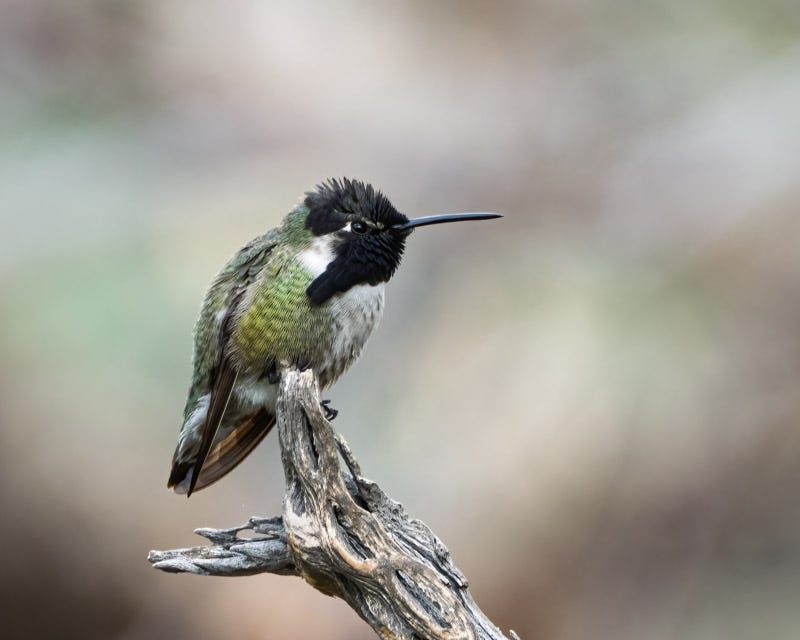
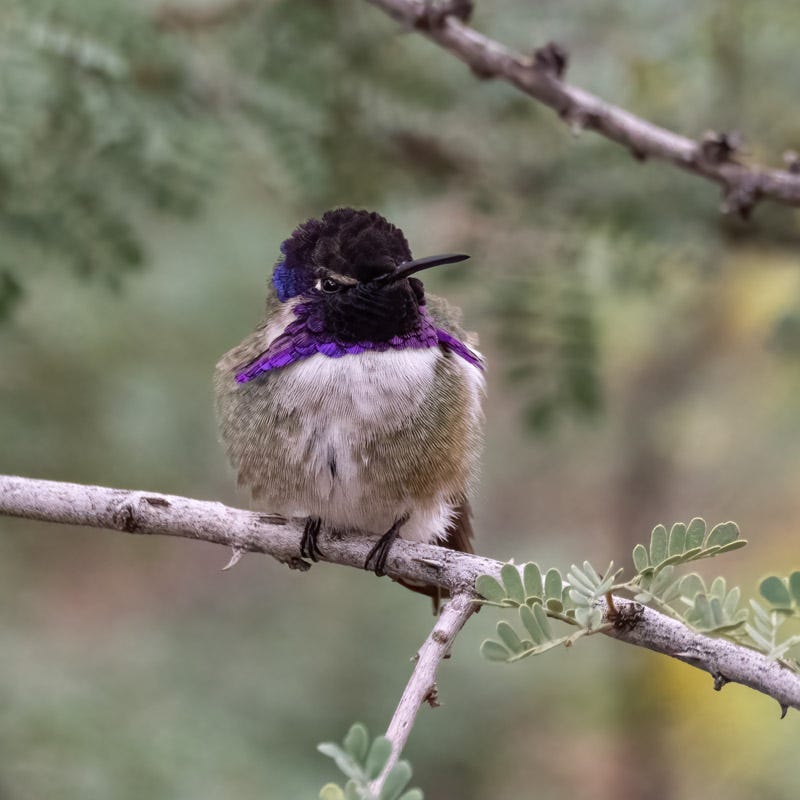
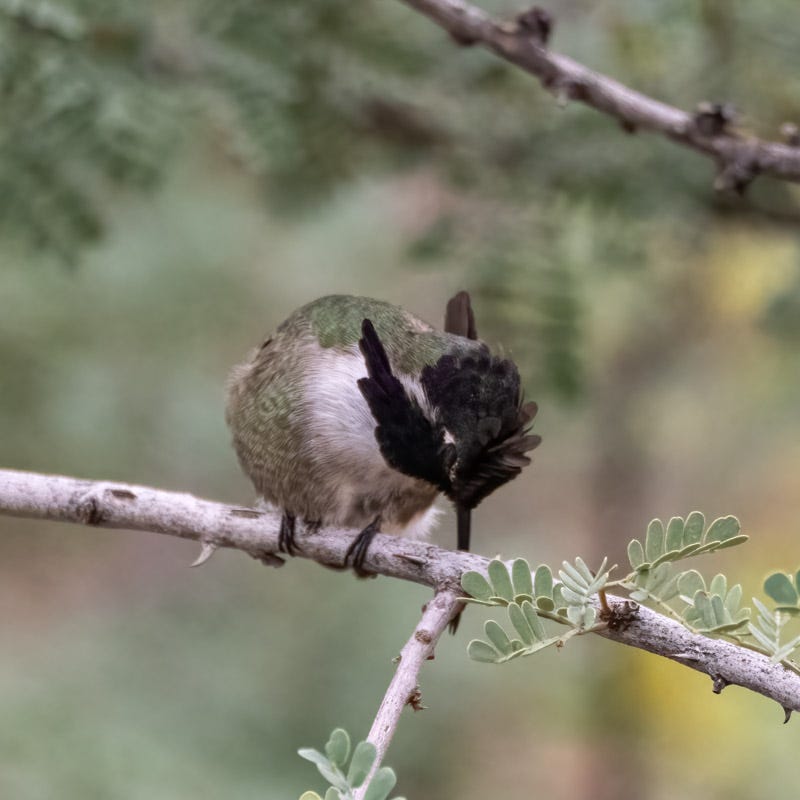

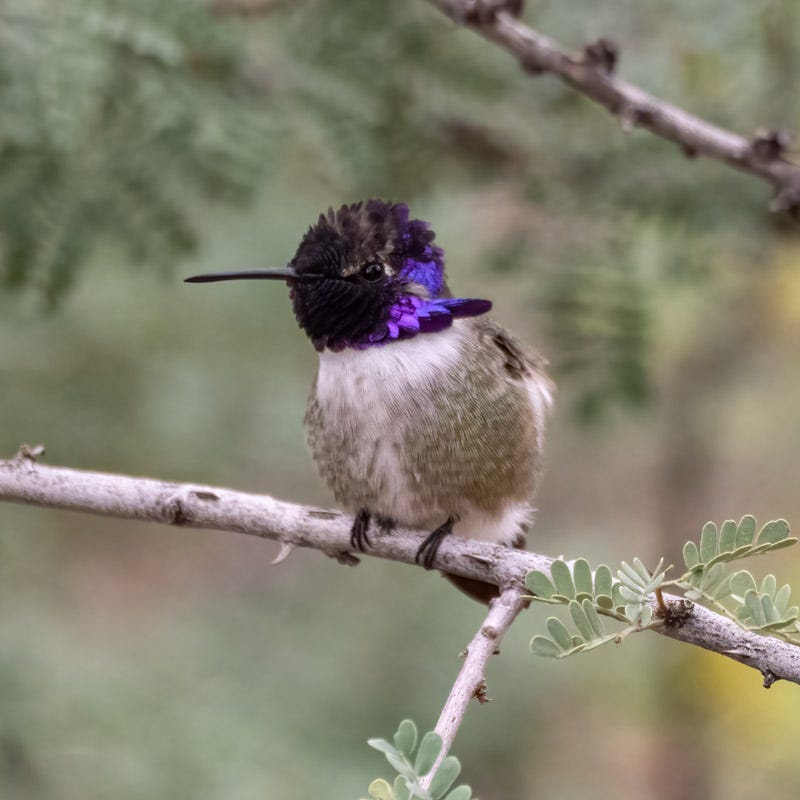
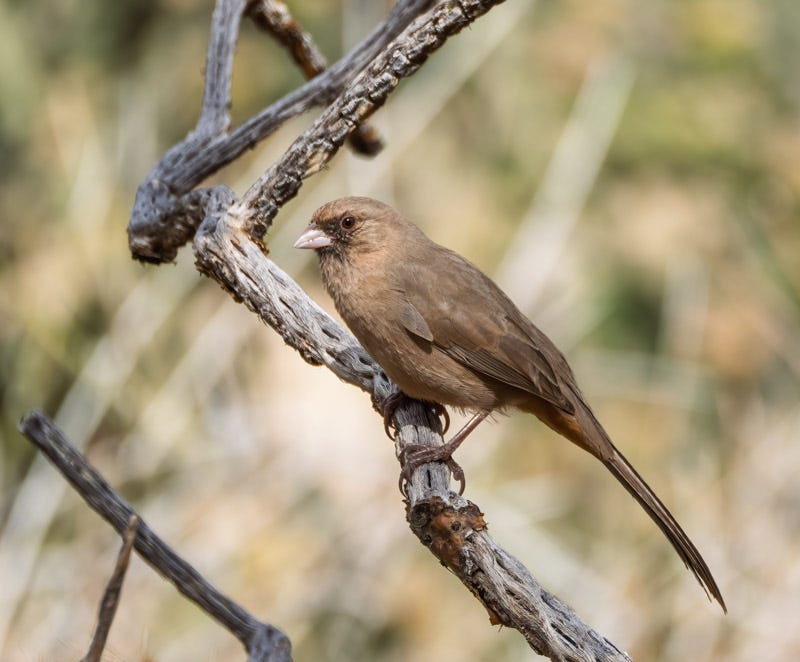

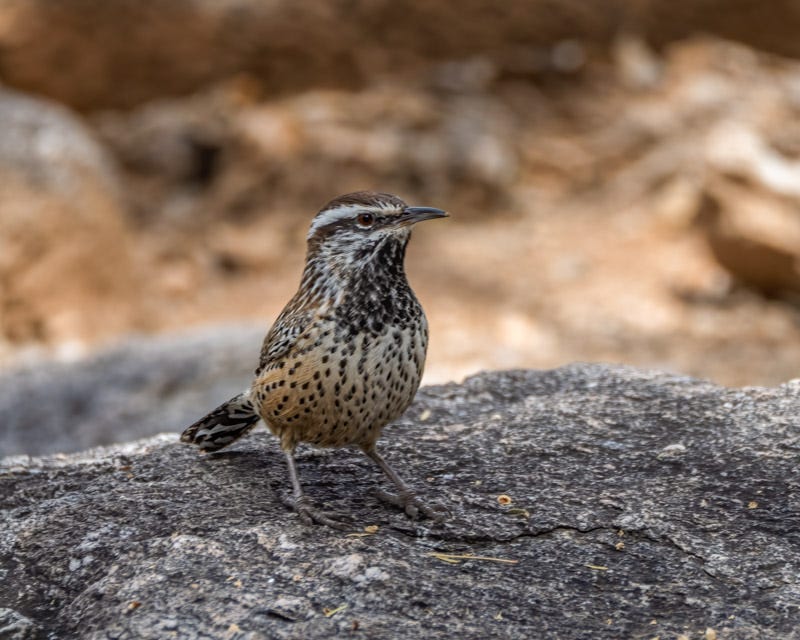
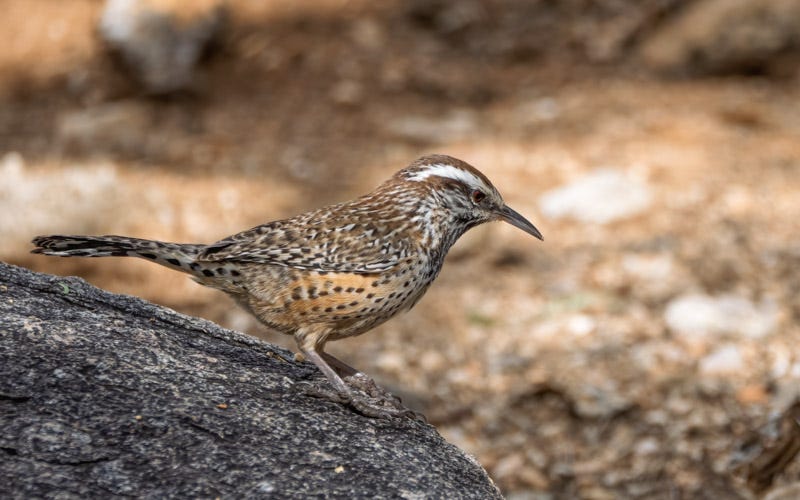
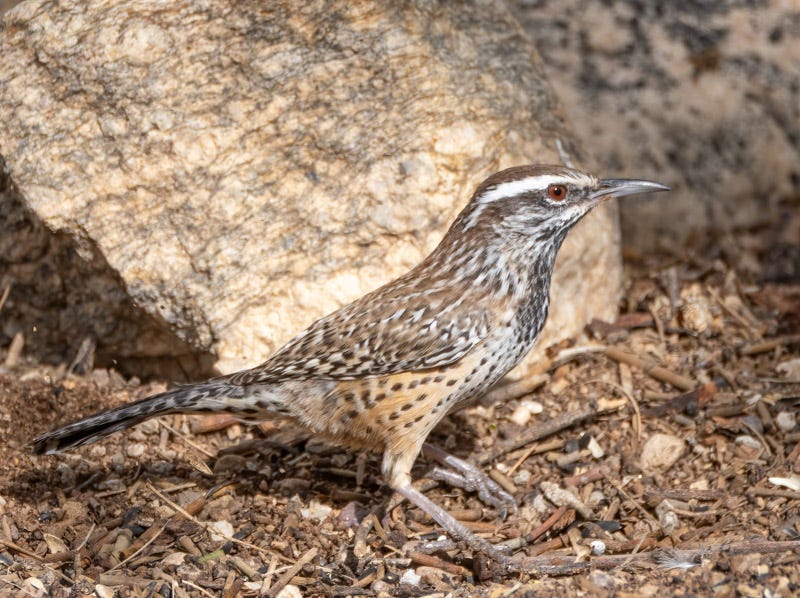
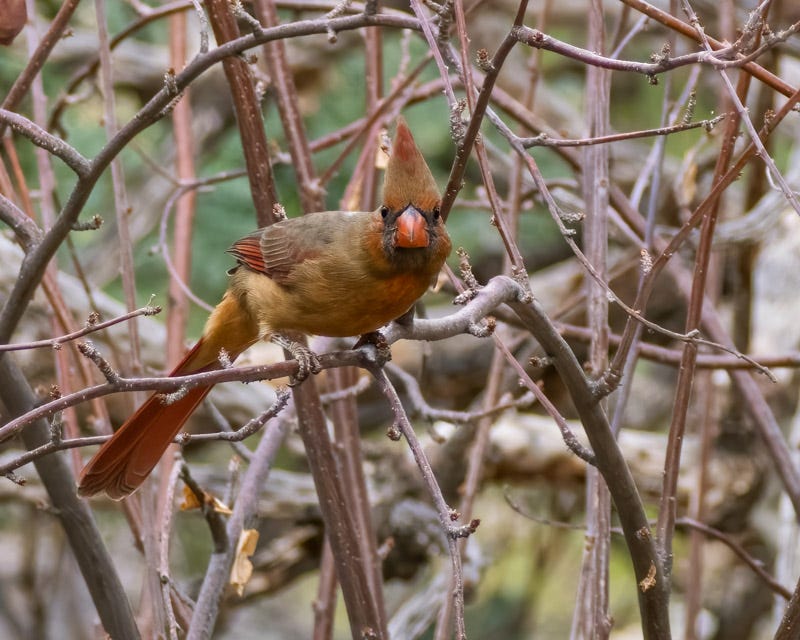
The hummingbird pictures, contrast between the black and then the violet, are wonderful. I also really like the cactus wren pictures.
Terrific images of that Costa's.